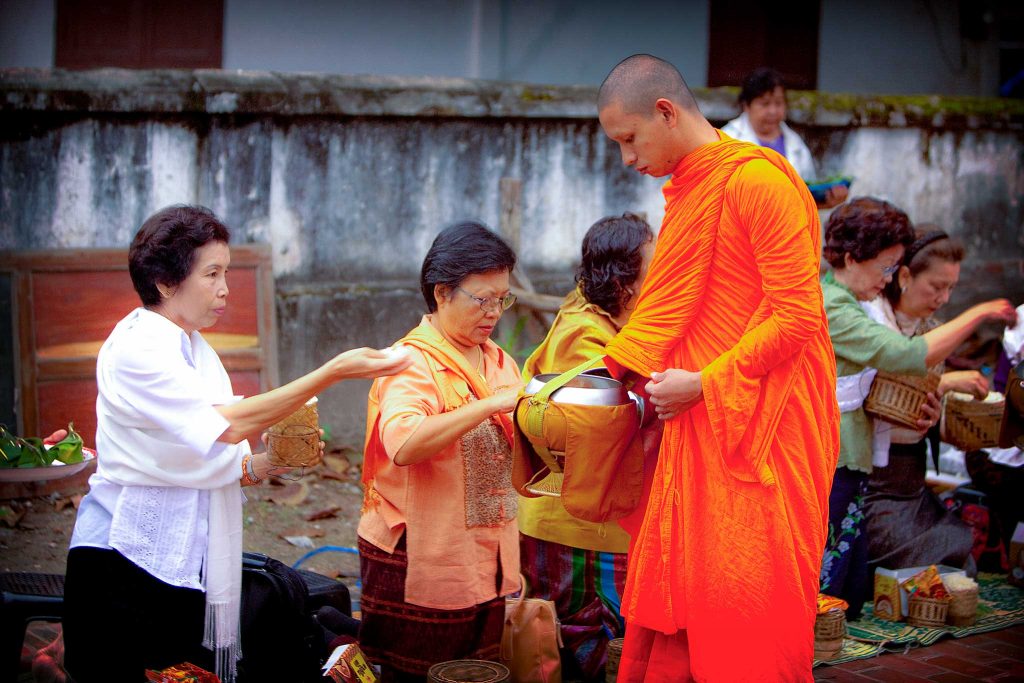In its broadest sense, the Sangha refers to the community of monastic and lay disciples of the Buddha, established in the months following His Enlightenment and decision to teach the Dhamma. It was the merchants Tapassu and Bhallika of Ukkala (now Orissa), who were the first laity to take refuge in the Buddha and Dhamma, after they offered Him food not long since His Enlightenment on the full-moon of Vesakhā.
The monastic lineage is traced back to the five ascetics who practised extreme abstinence with the Buddha-to-be at Pragbodhi. The Buddha delivered His first discourse to them in the Deer Park at Isipatana (modern day Sarnath) which set the “Wheel of Dhamma” in motion. All five ascetics attained Enlightenment themselves (becoming Arahants) after listening to the Buddha’s second sermon on ‘Non-self’.

The community of monks and nuns are ambassadors of the Buddha’s teachings in their full commitment to learning, practising, and preserving the Buddha-Dhamma.
Within a period of weeks, the number of Arahants rose to 60 after the sons of noblemen from Varanasi listened to the Buddha’s teachings. He sent them in different directions with the instructions to teach the Dhamma to discerning listeners, out of compassion for the world. The Buddha was against the entrenched “caste” system of hierarchical social order then; He defined nobility not by birth, but by one’s virtues. Thus, thousands of people from all social categories were ordained as monks and formed the early Sangha.
Within the Buddha’s lifetime, the Sangha developed into the most well-respected religious order in India. Before the Buddha relinquished His life, He asked His disciples to speak up if they had any doubts, questions or clarifications as to the Dhamma that they have learned. After patiently repeating the question three times, there was still the same perfect silence, because even the last of His disciples gathered on that occasion had attained the first level of sainthood, and had gone beyond doubts and perplexity as to the teachings.

The lifestyle of the Sangha closely resembles that of the Buddha and His disciples, which is crafted to be conducive for seclusion of the mind, and self-realisation.
Over the centuries, the Sangha has been the carrier and preserver of the Dhamma-Vinaya. They revere it, abide by it, and teach it compassionately, passing down the teachings inherited from the Buddha Himself. They do not seek any payment or favour in return, but kindly bear the hope that more beings will realise and benefit from the sublime teachings of the Buddha.
 Holistic Education for Integral Human Development
Holistic Education for Integral Human Development